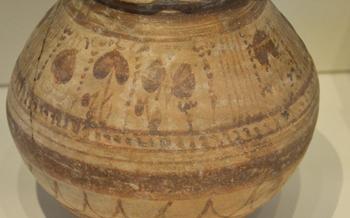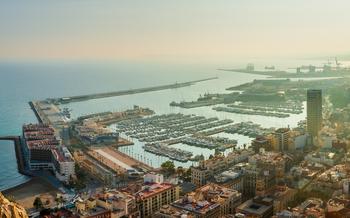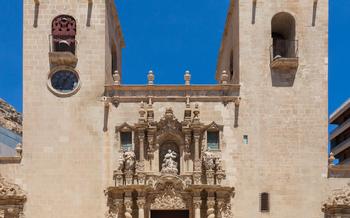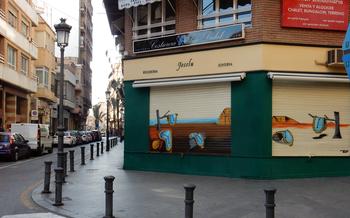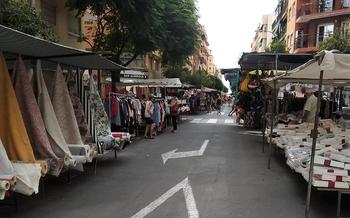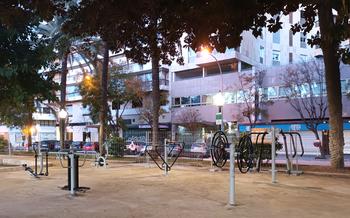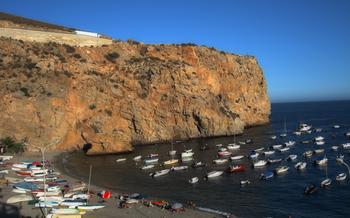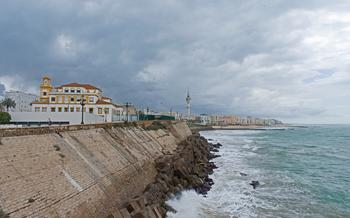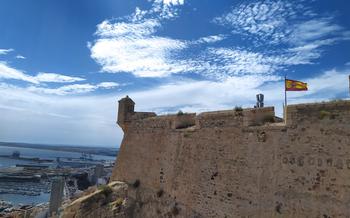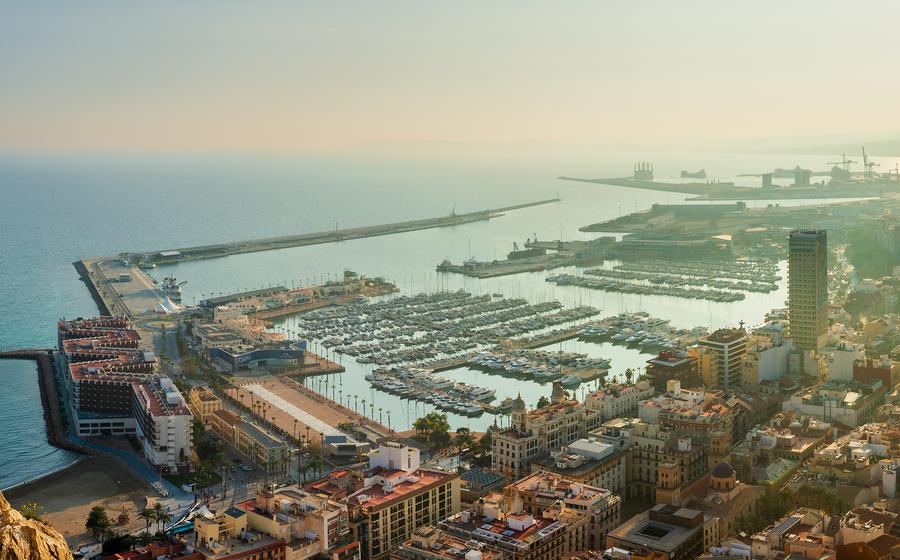
The Witches House (Casa de las Brujas)
- Legends and Myths Surrounding the House
- Exploring the Interior of the House
- Visiting the Museum
- Other Attractions Nearby
- Getting to the Witches House
- Tips for Visiting the House
- Interactive Exhibits and Activities
- The Magic of Alicante
- The Witches of Alicante
- The House's Architectural Features
- The Witches House in Popular Culture
- Preservation and Restoration Efforts
- Insider Tip: Hidden Gems
Legends and Myths Surrounding the House
The Witches House is steeped in a rich tapestry of legends and myths that have captivated imaginations for centuries. One of the most enduring tales is that of the witches and their coven, said to have gathered within the house's walls to practice their dark arts. Local folklore speaks of a powerful witch named María la Negra, who led the coven and was feared throughout the region for her magical abilities.
Another chilling legend tells of a cursed house, where the spirits of its former inhabitants are said to roam the halls, seeking revenge on those who dare to enter. Visitors have reported strange occurrences, such as flickering lights, disembodied voices, and the feeling of being watched. The house's reputation as a cursed place has added to its allure, drawing both the curious and the skeptical.
Over time, the Witches House has become a symbol of Alicante's dark history and its connection to witchcraft. Local superstitions and beliefs associated with the house have been passed down through generations, contributing to its mystique and adding to its allure as a must-visit destination for those seeking a glimpse into the city's hidden past.
Exploring the Interior of the House
Within the walls of the Witches House, visitors embark on a journey through time and magic. Each room unfolds a tale, revealing the secrets of witchcraft and the lives of those who dwelled within. The central room, once the heart of the coven's activities, now showcases artifacts and exhibits related to witchcraft and magic. Ancient spell books, cauldrons, and mystical symbols adorn the walls, creating an atmosphere of enchantment.
In the kitchen, visitors can almost sense the presence of the witches, brewing their potions and concocting their spells. The fireplace, where the witches once gathered, still holds the secrets of their rituals. The bedrooms offer a glimpse into the private lives of the witches, with personal belongings and objects of power.
Interactive displays and educational materials engage visitors, allowing them to delve deeper into the world of witchcraft and magic. The Witches House Museum is not just a place to learn about the past but also an immersive experience that transports visitors to a time when magic was a way of life.
Visiting the Museum
The Witches House (Casa de las Brujas) is open to the public as a museum dedicated to the history and legends surrounding witchcraft in Alicante. Visitors can immerse themselves in the world of magic and the supernatural through a variety of exhibits and interactive displays.
Hours of Operation and Admission Fees
The museum is open from Tuesday to Sunday, with varying hours depending on the season. It is closed on Mondays and public holidays. Admission fees are reasonable, with discounts available for students, seniors, and families.
Guided Tours and Self-Guided Exploration
Guided tours are available in several languages, providing visitors with a deeper understanding of the house's history and significance. Alternatively, visitors can opt for self-guided exploration, allowing them to wander through the exhibits at their own pace.
Facilities and Amenities
The museum offers a range of facilities and amenities for visitors' convenience. These include a gift shop where visitors can purchase souvenirs, a café serving refreshments, and restrooms.
Accessibility for Individuals with Disabilities
The Witches House is committed to providing an inclusive experience for all visitors. The museum is wheelchair accessible, with ramps and elevators available to navigate the different floors. Additionally, assistive listening devices are provided for visitors with hearing impairments.
Other Attractions Nearby
The Witches House is located in the heart of Alicante, a vibrant city with a rich history and culture. Visitors to the museum can easily explore other attractions in the area to enhance their experience.
Just a short walk from the Witches House is the Santa Barbara Castle, a majestic fortress perched on a hilltop overlooking the city. The castle offers stunning panoramic views of Alicante and the surrounding countryside, and its well-preserved medieval architecture is a testament to the city's rich past.
For those interested in art and culture, the Alicante Museum of Contemporary Art (MACA) is a must-visit. The museum houses a diverse collection of modern and contemporary art, including works by renowned Spanish and international artists.
Alicante is also a shopper's paradise, with a wide range of shopping options from traditional markets to modern shopping malls. The Central Market is a bustling marketplace where visitors can find fresh produce, seafood, spices, and other local delicacies. For a more upscale shopping experience, the El Corte Inglés department store offers a wide variety of fashion, electronics, and home goods.
In the evening, Alicante comes alive with a vibrant nightlife scene. The city's many bars, clubs, and restaurants offer a variety of entertainment options, from live music and dancing to traditional Spanish cuisine.
For those seeking a relaxing break, Alicante offers several beautiful beaches, including Postiguet Beach, which is located just a short walk from the city center. The beach offers a variety of water sports and activities, as well as stunning views of the Mediterranean Sea.
Getting to the Witches House
The Witches House is conveniently located in the heart of Alicante, Spain, making it easily accessible to visitors. Situated at Calle Mayor 54, the house is nestled amidst the city's historic district, surrounded by charming streets and bustling plazas.
To reach the Witches House, you can take advantage of Alicante's efficient public transportation system. The city's TRAM (tram network) offers a convenient option, with the nearest stop, "Plaza de Gabriel Miró," located just a short walk from the museum. Alternatively, numerous bus routes serve the area, with stops within easy reach of the house.
For those arriving by car, parking can be found in the nearby public parking garages or on-street parking spaces. However, it's important to note that parking in the city center can be limited, so it's advisable to plan accordingly.
Once you arrive at the Witches House, you'll be greeted by its striking facade, adorned with intricate carvings and mysterious symbols that hint at the secrets within. Prepare to step into a world of enchantment and intrigue as you explore the hidden depths of this captivating attraction.
Tips for Visiting the House
Best time to visit for a unique experience
To fully immerse yourself in the mystical atmosphere of the Witches House, plan your visit during the evening hours or on a foggy or rainy day. The dim lighting and eerie ambiance enhance the overall experience, creating a truly unforgettable visit.
Recommended duration for a comprehensive visit
Allocate at least one to two hours for your visit to the Witches House. This duration allows ample time to explore the different rooms, examine the exhibits, and soak in the unique atmosphere. You'll have the opportunity to learn about the fascinating history, legends, and myths associated with the house.
Dress code and appropriate attire for the museum
While there is no specific dress code for visiting the Witches House, it's advisable to dress respectfully. Opt for comfortable clothing that allows you to move around freely and appreciate the exhibits without any discomfort.
Photography and videography policies
Photography and videography are generally permitted within the Witches House, but it's important to be mindful of other visitors and the preservation of the exhibits. Flash photography and tripods are not allowed, as they can damage the artifacts and disrupt the ambiance of the museum.
Interactive Exhibits and Activities
The Witches House offers a range of interactive exhibits and activities that bring the history and legends of witchcraft to life. Visitors can engage in hands-on experiences, such as creating their own potions and spells, or learning about the art of divination. Workshops, classes, and educational programs are conducted regularly, providing opportunities for visitors to delve deeper into the world of witchcraft and magic.
Storytelling sessions and theatrical performances held in the house transport visitors back in time, showcasing the tales of witches, their trials, and their enduring legacy. Seasonal events and special exhibitions add to the dynamic experience, offering unique insights into the magical world of Alicante.
The interactive exhibits at the Witches House not only entertain but also educate, fostering a deeper understanding and appreciation of the rich history and cultural heritage associated with witchcraft in Alicante.
The Magic of Alicante
Alicante, a city steeped in history and culture, has long been associated with magic and mysticism. Local traditions and beliefs weave a tapestry of enchantment that permeates the very air. The city's reputation as a hub of magic is not merely a matter of folklore; it is deeply rooted in the city's past and present.
Throughout history, Alicante has been a melting pot of cultures and beliefs. The fusion of ancient Iberian, Roman, and Moorish influences has created a unique blend of mysticism and spirituality that can still be felt today. The city's narrow streets and hidden corners seem to whisper secrets of a bygone era, when witches and sorcerers walked among the mortals.
The annual Bonfires of San Juan festival, held every June, is a testament to Alicante's magical heritage. During this spectacular celebration, giant bonfires illuminate the night sky as people gather to celebrate the summer solstice and pay homage to the ancient rituals of fire and purification. The festival is a vibrant display of Alicante's enduring connection to its magical roots.
Whether it's the allure of the Witches House or the enchanting atmosphere of the city itself, Alicante holds a special place in the hearts of those drawn to the world of magic and mystery.
The Witches of Alicante
Alicante's history is intertwined with the lives of notable figures associated with witchcraft. These women, often healers, wise women, or spiritual leaders, played a significant role in the city's cultural and spiritual landscape. One such figure was Maria la Negra, a legendary witch who was said to possess the power to heal the sick and commune with spirits. Another was Juana la Loca, a woman who was accused of witchcraft and burned at the stake during the Spanish Inquisition. These women, along with many others, left an indelible mark on Alicante's history, shaping the city's reputation as a hub of magic and mysticism.
The House's Architectural Features
The Witches House showcases a blend of architectural styles, including Gothic, Renaissance, and Baroque elements. Its intricate stone carvings, arched doorways, and decorative moldings reveal the artistic craftsmanship of the era. The house's facade is adorned with gargoyles, grotesque figures, and symbols associated with witchcraft and magic, hinting at the building's history and purpose.
Inside, the house features a labyrinth of rooms and corridors, each with its unique character. Spiral staircases lead to hidden chambers, while secret passages and nooks add an air of mystery. The rooms are adorned with frescoes, murals, and tapestries depicting scenes from mythology and folklore, further enhancing the house's magical atmosphere.
The Witches House stands out for its unique architectural features, which reflect the city's rich cultural heritage. It is a testament to the skill and creativity of Alicante's artisans, and its well-preserved condition allows visitors to step back in time and explore a world of enchantment and intrigue.
The Witches House in Popular Culture
The Witches House has captured the imagination of artists, writers, and filmmakers alike, becoming a source of inspiration for various creative works. In literature, the house has featured in books such as "The Witches of Alicante" by Spanish author Isabel Allende, which weaves a fictional tale around the legends and myths associated with the site. The house's eerie atmosphere and dark history have also made it a popular setting for horror movies, with films like "The Devil's Backbone" and "The Orphanage" utilizing its unique ambiance to create a chilling cinematic experience. Furthermore, television shows such as "Ghost Hunters International" and "Mysteries at the Museum" have featured segments exploring the paranormal activities and legends surrounding the Witches House, further cementing its status as a captivating and mysterious location.
Preservation and Restoration Efforts
The Witches House, as a historical site of cultural significance, faces challenges in preserving its original state while ensuring accessibility to the public. Conservation and restoration projects are crucial to maintain the integrity of the building and its artifacts. Experts in architecture, history, and conservation work together to assess the condition of the house and develop appropriate preservation strategies.
Over the years, restoration efforts have focused on repairing structural damage, restoring architectural features, and conserving artifacts. These projects involve careful cleaning, restoration of paint and plasterwork, and reinforcement of weakened structures. The goal is to retain the authenticity of the house while ensuring its longevity and safety for visitors.
One notable restoration project involved the repair of the wooden beams supporting the roof. These beams had deteriorated over time due to exposure to moisture and insect infestation. Conservators used traditional techniques to repair and reinforce the beams while maintaining their original appearance.
The preservation of the Witches House extends beyond the physical structure to include its artifacts and exhibits. Museum staff work to ensure that artifacts are properly stored, displayed, and protected from damage. They also conduct research and documentation to increase understanding of the house's history and significance.
By undertaking these preservation and restoration efforts, the Witches House remains a living testament to Alicante's rich history and cultural heritage, offering visitors a glimpse into the world of witchcraft and magic.
Insider Tip: Hidden Gems
As you explore the Witches House, keep an eye out for secret passages and hidden rooms. These hidden nooks and crannies often reveal fascinating artifacts, forgotten stories, and a deeper glimpse into the house's enigmatic past.
Venture beyond the main exhibition spaces to discover a hidden chamber beneath the staircase, rumored to have been used for clandestine meetings of the witches' coven. In the attic, you might stumble upon a collection of ancient spellbooks and magical tools, left behind by the house's former occupants.
Step outside the Witches House and explore the surrounding area for more hidden gems. Just a short walk away, you'll find the Witchcraft Museum, housing a captivating collection of artifacts and exhibits related to witchcraft and the occult.
For a truly unique souvenir, visit the local market, where you can find handmade witch dolls, spell candles, and other magical trinkets. These items, crafted by local artisans, are imbued with the spirit of Alicante's rich magical heritage.
With a keen eye and a sense of adventure, you'll uncover the hidden treasures that make the Witches House and its surroundings a captivating destination for travelers and history enthusiasts alike.
